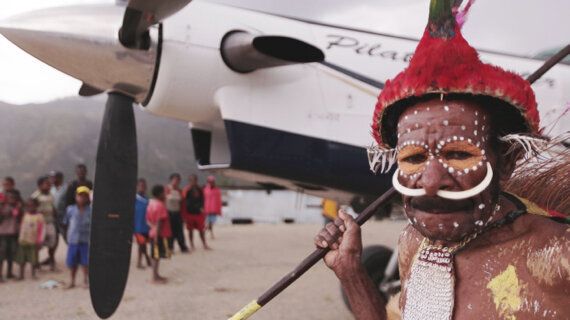
In advance of Channel 4's brand new series, Worst Place to be a Pilot, and as one of the pilots featured in the series, I thought I'd let you in on a sneak preview by filling you in on a typical day in the life of a bush pilot.
04:15am and my alarm is going off, as it does for six days of the week. It's time to start the day here in Nabire, a small town on the northern coast of Papua, the easternmost province of Indonesia and home to some of the world's most challenging bush and mountain flying.
A typical flying day in Papua begins the moment the sun pops up over the horizon. Susi Air, like all the airlines here, start early to maximise the calmer winds of the morning and help avoid the turbulent winds and thermal updraughts that develop as the day warms up.
Today's schedule is to deliver a mix of rice, cargo and local villagers from Nabire to four different airstrips - Hitadipa, Apowo, Bilai and Pogapa. First up is a subsidised load of rice to Hitadipa, about 100nm to the east of Nabire. It's located mid-way along what pilots out here refer to as "The Freeway", a valley running east west between Nabire and Wamena. It's one of Papua's busiest stretches of airspace with dozens of flights a day flying along it.
Departing Nabire, the sky is a beautiful blend of red and orange, contrasting against the deep, lush greens of the jungles below. When we get them, these stunning sunrises really help to make those early starts worth it. The Freeway valley begins just a few miles to the east of Nabire and within minutes you're amongst the mountains.
After 50 minutes or so flying, Hitadipa is in sight. It's located at the bottom of a narrow valley and due to its location, makes for a dramatic approach. It requires pilots to descend deep into the narrow valley in order to ensure they can land at the very beginning of what is a short and usually slippery grass airstrip. Once in that valley with a fully loaded aircraft, it's impossible to fly back out. The only option is to make the landing no matter what; a go-around is not an option. This is real bush flying!
Rice offloaded, it is time to head back to Nabire, along with a few local villagers who've purchased a ticket for the trip. It's pretty typical to have a few passengers on a return trip, usually going to visit relatives or sell their wares in the larger towns such as Nabire.
The next flight, to Apowo, is only a 25 minute flight south of Nabire and one of the many government-subsidised routes known as Perintis Flights. These flights happen all over Indonesia for local people. Due to the lack of infrastructure, the only form of reliable transport between these smaller towns and villages is small aircraft such as the Pilatus Porter and Cessna Caravan.

Apowo is a small missionary airstrip, cut into a mountainside and directly opposite another airstrip, Kegata, on the other side of the valley. With just over a mile between them, they could perhaps hold the record for the world's shortest commercial flight. As always, after landing on the muddy and slippery Apowo airstrip there is a large number of people all wanting to fly to Nabire. Sadly the aircraft only has seven seats, so the locals have to prioritise who gets to go. Those left behind will have to wait for the next flight which, due to the unpredictable weather, could be many days or even weeks from now.
The following flight to Bilai is a fuel drop. Occasionally we get charters like this to fly 50 gallon drums of fuel to various remote airstrips for use in machinery, usually used for constructing roads or larger sealed airstrips. Getting a drum weighing nearly 200kgs into the aircraft is relatively easy, - a pick-up truck is about the same height as the floor, so the drums can be rolled in. Getting them out at the other end at the remote airstrips is even easier; simply place a large truck tyre on the ground outside the aircraft door and roll the drums one at a time onto the tyre to cushions the fall. A genius and simple solution when you don't have a forklift truck!
The final flight to Pogapa is another rice drop which, because of the time of day, means some stronger winds due to the late morning sun heating up the slopes. It's a larger and longer airstrip than the previous ones so the addition of the turbulent winds isn't so much of an issue as it would be at the earlier airstrips. However, one should never get too casual about landing anywhere in Papua as the two wrecked Cessna Caravans on this airstrip are testament to.
Papua is definitely not an environment for everyone. Its remoteness doesn't allow for much of a social life but we pilots love it here. The flying, the mountains, the people and the craziness of it all keeps us here. It might well be the Worst Place to be a Pilot with it's challenging, difficult, and dangerous conditions, but it's also hugely rewarding and if you speak to any of the pilots who've stuck around, they'll tell you, we have the best job in the world.
You can catch the first episode of Channel 4's new visually jaw-dropping series, Worst Place to be a Pilot, on Tuesday 19 August at 9pm.
Matt Dearden is a Pilatus PC-6 pilot with Susi Air, flying in the mountains of Papua, Indonesia. You can check out his personal blog here: http://indopilot.blogspot.com